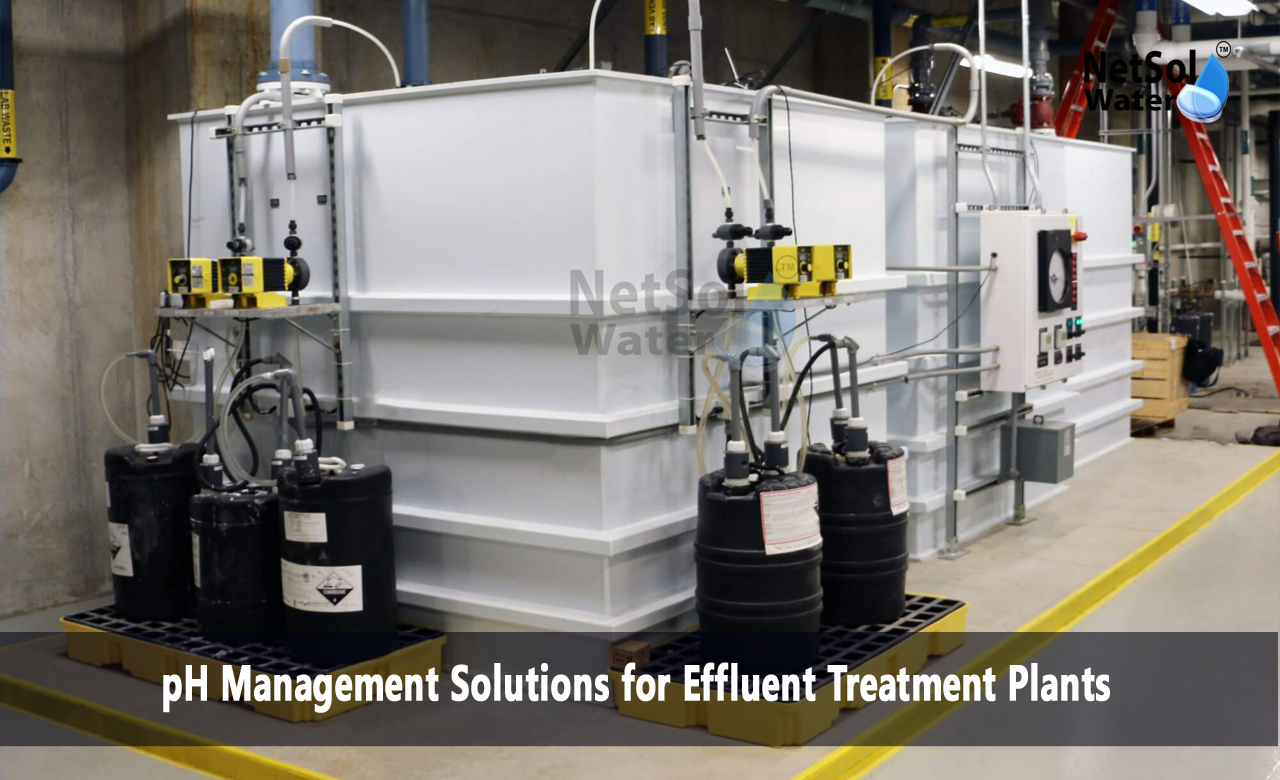How to Manage pH in ETP Plant?
Industrial wastewater treatment stands at the forefront of environmental protection. The success of effluent treatment plants depends on maintaining the right pH levels throughout the treatment process. Proper pH management ensures the effectiveness of biological treatments while meeting environmental compliance standards. Industries generate wastewater with varying pH levels based on their processes. These variations can impact treatment efficiency as well as the longevity of treatment equipment.
We will examine the core aspects of pH control systems along with practical approaches to achieve consistent results. Understanding these solutions helps plant operators enhance their treatment processes while protecting both equipment and the environment.
The Fundamentals of pH in Effluent Treatment
pH management forms the foundation of effective wastewater treatment. The chemical reactions that occur during treatment work best within specific pH ranges. Most biological treatment processes need pH levels between 6.5 and 8.5 for optimal performance. When pH levels move outside this range treatment efficiency drops. The bacteria that break down organic waste become less active. This causes incomplete treatment of the wastewater.
Let us examine the key aspects of pH management in treatment plants:
pH Monitoring Systems: Modern treatment plants use continuous monitoring systems to track pH levels. These systems include sensors placed at strategic points throughout the treatment process. The sensors send real-time data to control systems. Plant operators can see pH variations as they happen. This allows for quick adjustments when needed. Digital displays show current pH readings along with historical trends. These trends help operators spot patterns and prevent problems before they occur.
Buffer Solutions: Buffer solutions help stabilize pH levels in wastewater. They resist changes in pH when acids or bases enter the system. Treatment plants use different types of buffers based on their specific needs. Carbonate buffers work well for most applications. They maintain stable pH levels even when new wastewater enters the system. The right buffer solution creates a more consistent treatment environment.
Chemical Dosing Equipment: Precise chemical dosing keeps pH levels in the target range. Modern dosing systems use automated controls linked to pH monitors. When pH levels drift the system adds acids or bases as needed. Smart dosing systems adjust the amount of chemicals based on how fast pH changes. This prevents overshooting target levels while saving chemicals. The equipment includes storage tanks, metering pumps and injection points.
Advanced pH Control Strategies
The success of pH management depends on having the right control strategies in place. Treatment plants need systems that respond quickly to changes while maintaining stability. This section explores advanced approaches to pH control. Let us look at the essential strategies:
Feed forward Control Systems: Feed forward systems measure incoming wastewater characteristics. They predict pH adjustments needed before problems occur. These systems analyze flow rates and pH levels of incoming streams. The analysis helps determine chemical dosing requirements in advance. This proactive approach prevents large pH swings in the treatment process. Plant operators can prepare for challenging conditions before they impact treatment.
Multi-point Monitoring: Treatment plants benefit from measuring pH at multiple locations. This creates a complete picture of pH changes throughout the process. Monitoring points include:
· Influent receiving stations
· Primary treatment tanks
· Biological treatment zones
· Final discharge points
Each monitoring point provides valuable data about treatment effectiveness. Operators use this information to fine-tune the process. The system maintains historical records for compliance reporting.
Automated Control Algorithms
Modern pH control systems use sophisticated algorithms. These programs analyze data from multiple sources. They consider factors like:
· Flow rates
· Temperature changes
· Chemical consumption patterns
· Treatment performance metrics
The algorithms adjust chemical dosing automatically. They learn from past performance to improve future decisions. This reduces operator workload while improving treatment consistency.
Maintenance and Optimization
Regular maintenance keeps pH management systems working at their best. Treatment plants need comprehensive programs to protect their investment. This section covers key maintenance and optimization practices. Let us explore the main components:
Sensor Calibration Programs: pH sensors need regular calibration to maintain accuracy. A good calibration program includes:
· Weekly accuracy checks
· Monthly full calibrations
· Quarterly sensor cleaning
· Annual replacement schedules
Proper calibration ensures reliable pH measurements. Plant operators document all calibration activities. They track sensor performance over time to spot potential problems.
Chemical Storage Management: Safe chemical storage supports effective pH control. Storage systems need proper design and maintenance. Key aspects include:
· Temperature-controlled storage areas
· Secondary containment systems
· Inventory tracking systems
· Safety equipment stations
Good storage practices prevent chemical degradation. They also protect worker safety and the environment. Regular inspections help maintain storage system integrity.
Performance Optimization: Treatment plants continuously work to improve their pH management. Optimization activities focus on several areas:
· Energy consumption reduction
· Chemical usage efficiency
· Treatment consistency
· Operating cost management
Regular performance reviews identify improvement opportunities. Plant managers use this information to update operating procedures. They also plan equipment upgrades based on optimization findings.
Take control of your effluent treatment plant's pH management today.
Our team of water treatment specialists can help you implement these solutions. We offer complete pH management systems tailored to your specific needs. Contact us to schedule a plant assessment. Together we can enhance your treatment process efficiency while ensuring environmental compliance. Let us help you build a more sustainable future for your wastewater treatment operations.
Contact Netsol Water at:
Phone: +91-965-060-8473, Email: enquiry@netsolwater.com



